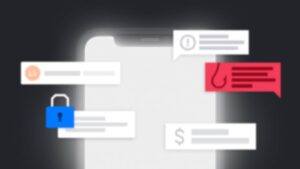The UK’s National Cyber Security Centre (NCSC) reported that in the past year, it has stopped 140,000 phishing attacks and taken down more than 190,000 fraudulent websites. In its second annual report on the Active Cyber Defence (ACD) program, the NCSC details how its use of Synthetic DMARC has stopped sophisticated phishing operations, including one in which hackers used a gov.uk domain to impersonate an airline organization.
While this approach of synthesising DMARC records has proven to be effective in stopping spoof email campaigns so far, the NCSC’s report also describes it as “an evil hacky kludge,” adding that more needs to be done to express policy ownership in domain hierarchies.
Here, we address the shortfalls of DMARC and email authentication records, and consider what more can be done to stop strong-form impersonation attacks.
A necessary first step
95% of all attacks on enterprise networks are the result of successful spear phishing, which often involves an attacker directly impersonating the email domain of the receiver. For example, any attacker could send an email from your business email domain to an employee at your business, and the recipient would have no way to validate the sender’s authenticity in the absence of authentication records.
SPF and DKIM are email authentication records that, in short, allow email clients to validate the domain name of an inbound email. DMARC enables organizations to specify how the client responds to emails that fail SPF or DKIM checks (generally reject, quarantine, or no action.) SPF, DKIM, and DMARC are essential for preventing direct impersonation of your organization’s email domain.
All email domains – especially those of trusted brands – are at risk of direct domain impersonation, regardless of past threat activity.
The darker side of DMARC
However, DMARC has its downsides. And while the NCSC has encouraged more UK businesses and government agencies to adopt DMARC, the report doesn’t shy away from bringing these shortfalls to light.
1. DMARC configuration is time-consuming and resource intensive
The NCSC report states that “for any enterprise of a decent size, implementing DMARC is often a long process” and that “implementing DMARC is a lot harder than people will have you think.”
Strict DMARC policies can, if misconfigured, block the delivery of real, legitimate emails. As a result, the ACD recommends organizations take time to digest DMARC reports and investigate the nuances of their mail infrastructure, before gradually moving to a more protective DMARC policy. Unfortunately, this process takes many organizations well over a year.












